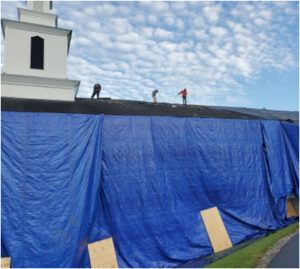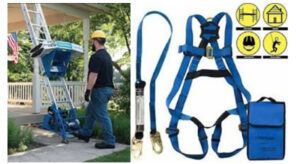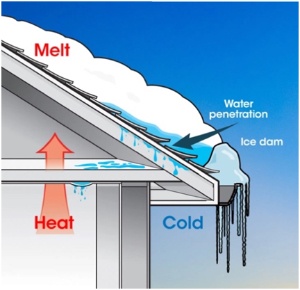What is the cost of plywood replacement?
- The cost of plywood changes very often. Please refer to the Blue Collar Roofers quote document to find the cost to replace plywood or OSB.
- We always speak with the customer before replacing plywood and we do not replace plywood unless it is necessary. Some companies will unnecessarily replace plywood to charge you as much as possible.
Did the Contractor provide you with Certificates of Insurance for both General Liability and Worker’s Compensation?
- Many inexpensive contractors do not carry the required insurance. This is incredibly problematic if leaks occur or if a worker gets hurt while installing the roof. The liability often falls on the homeowner.
Do you have a list of references?
- References are a great way to learn from previous customers’ experiences. We have a list of references and we provide them upon request.
How do you ensure that the proper number of fasteners are used and that they are located correctly?
- An independent laboratory study showed that 45% of nails miss the nailing strip with standard roofing shingles. If placed too low, the shingle will leak. If placed too high, the shingle will delaminate. On an average sized roof, 17,000 nails are installed, which means that about 8,000 nails miss the mark.
- We install GAF HDZ shingles. The HDZ shingles have the widest nail strip in the industry and only require 4 nails per shingle. The same independent laboratory study showed that 99.9% of the nails are placed accurately on HDZ shingles. Blue Collar Roofers does not miss the nailing strip.
How does the Contractor provide proof of the completed work?
- Blue Collar Roofers uses an application called CompanyCam, which allows us to take photos during the project, directly linked to your project only. Once the project is completed, we will share the link with the homeowner if the homeowner is interested in seeing photos of the project. The photos show proof of any plywood decking replacement, steps during the process, possible structural issues and of course, the finished photos.
Will you install all new flashing material or will you be reusing old flashing to save time?
- Reusing flashing can be very problematic if the flashing is not in good shape. Some contractors will reuse old and unreliable flashing in order to save time. We only use old flashing if it is in pristine condition.
What steps do you take to ensure safety of the home and my family?
- Blue Collar Roofers uses tarps and plywood to cover up siding and landscaping to avoid potential damage from falling roof debris. We always speak with the homeowner at the beginning of the job to ensure your knowledge of the process and to make you feel comfortable with the steps of the installation.
When do you collect payment?
- Some contractors require a deposit up front to start the job. We do not collect any money until the job is completed and we have performed a final walkthrough to ensure your satisfaction.
Where do you install starter strip shingles?
- Most contractors install starter strip shingles on the eaves of your home. We install starter strip along the eaves and rakes of your home. This prevents wind from blowing shingles off the edges of the roof. By installing starter strip along your eaves and rakes, GAF will also provide a free 15-year Windproven Warranty on its HDZ shingles.
What steps do you take for safety of your workers?
- Blue Collar Roofers requires its employees to take a 10-hour OSHA certification course. Additionally, employees are required to wear safety harnesses and other safety gear while installing your roof. We also require our supplier to deliver material on to the roof to avoid carrying material up ladders. If the supplier cannot deliver materials on to the roof, we use a ladder lift to bring up the material.
What is ice damming?
- Ice dams are common in Upstate New York. They occur when heavy snow builds up and melts during the day and then refreezes when temperatures drop overnight. After several days of this melting-freezing cycle, it is common for the melted water and ice to work up under the shingles until water enters the attic and eventually does damage to the ceilings, wall and indoor living space.
How can I prevent ice damming from damaging my home?
- There are two things that homeowners should do to prevent ice damming: (i) seal off attic bypasses and (ii) install proper insulation. Attic bypasses are passageways for warm air to get into your attic, meaning, any vents, pipes, etc. that create gaps between the lower living space and the attic. If these bypasses are not completely airtight, warm air will leak into your attic. The most notorious attic bypasses are furnace and water heater vents, chimney chases, ceiling light fixtures, plumbing vents, electric wires, and bath fans venting into attic spaces. Insulation is meant to cool down warm air as it rises but it acts more like a filter. It does not prevent warm air from escaping and settling on the underside of the roof.
- In order to address attic bypasses, homeowners should hire an insulation contractor to identify warm air leaks with an infrared camera and then properly seal them. Once the bypasses are properly sealed, the contractor should top off your insulation to meet today’s building code standards.
- Some homes, especially those with vaulted ceilings and those without attic/crawl spaces, present difficulties in properly sealing attic bypasses and installing insulation. With these homes, we tell homeowners to invest in roof rakes and heat cables. Roof rakes can be used to pull snow off the roof from the ground. Heat cables can be installed along the eaves of your home and turned on and off during the winter when snow or ice has built up. We highly discourage the use of axes or ice picks to chip away at the ice dam. These can put holes in your roof, cause damage to shingles, and cause serious injury if mishandled.
- All winter long, keep gutters and down spouts clear of snow and icicles.
Who is responsible for Ice Dams and the Resulting Leaks?
- Ice dams are the result of winter storm conditions. Blue Collar Roofers does a thorough job of explaining the importance of ventilation and insulation on any roof installation project and will recommend solutions, however, ice damming may still occur. Given that the ice dam is storm related, and not a roof flaw, damage caused by ice is not covered by GAF or Blue Collar Roofers.
Will you provide me with a written warranty for craftsmanship and for the materials?
- Blue Collar Roofers is a GAF Master Elite roofing contractor. This allows us to offer a variety of manufacturer warranty options, including the: (i) System Plus Warranty, (ii) Silver Pledge Warranty, and (iii) Golden Pledge Warranty. The warranties offer different levels of protection over the life of your roof. These warranties are transferable and last for fifty (50) years. Please feel free to read about each GAF warranty at the following website – https://www.gaf.com/en-us/for-homeowners/warranties.
- Additionally, every Blue Collar Roofers job comes with a 5 year craftsmanship warranty. We provide a written craftsmanship warranty upon request.
- GAF offers a free 15 year Windproof Warranty because HDZ Shingles are able to withstand Category 3 Hurricane Wind Speeds.

15. Does Blue Collar Roofers offer financing?
- Yes, we have a variety of financing options available to homeowners upon request. We use vendors that allow homeowners to apply for financing online. We also have relationships with local financing companies that take a more hands-on approach to financing your roofing/renovation project.












